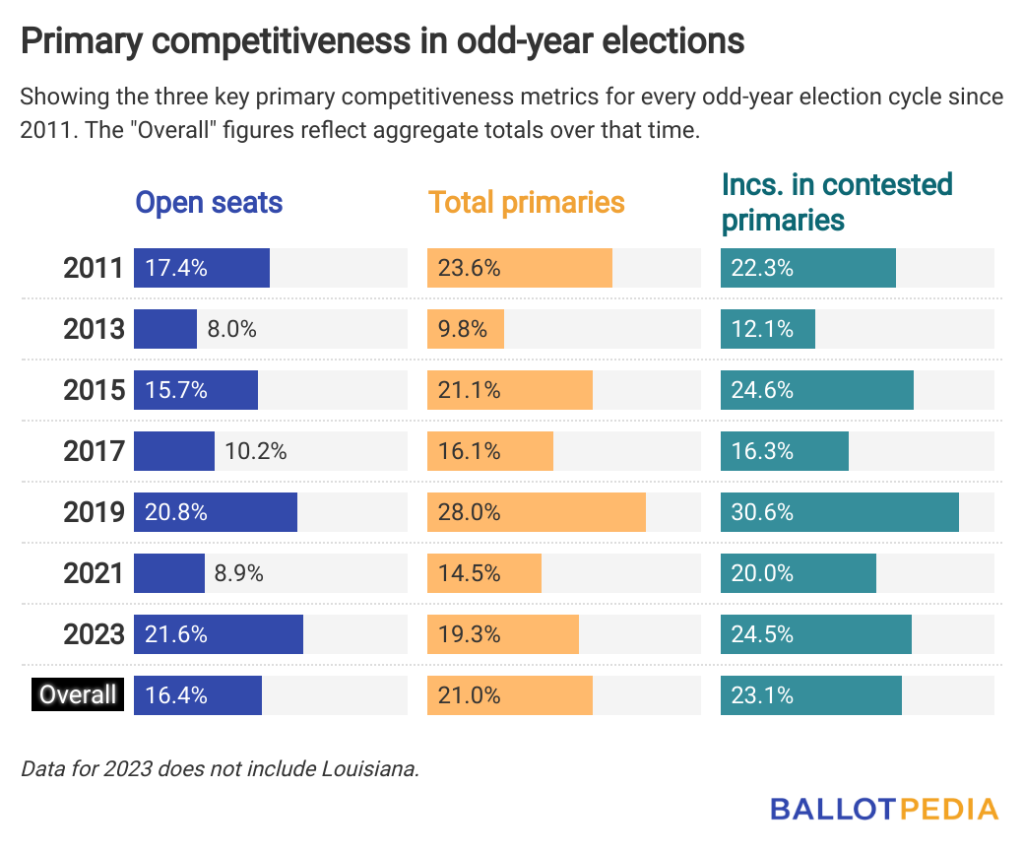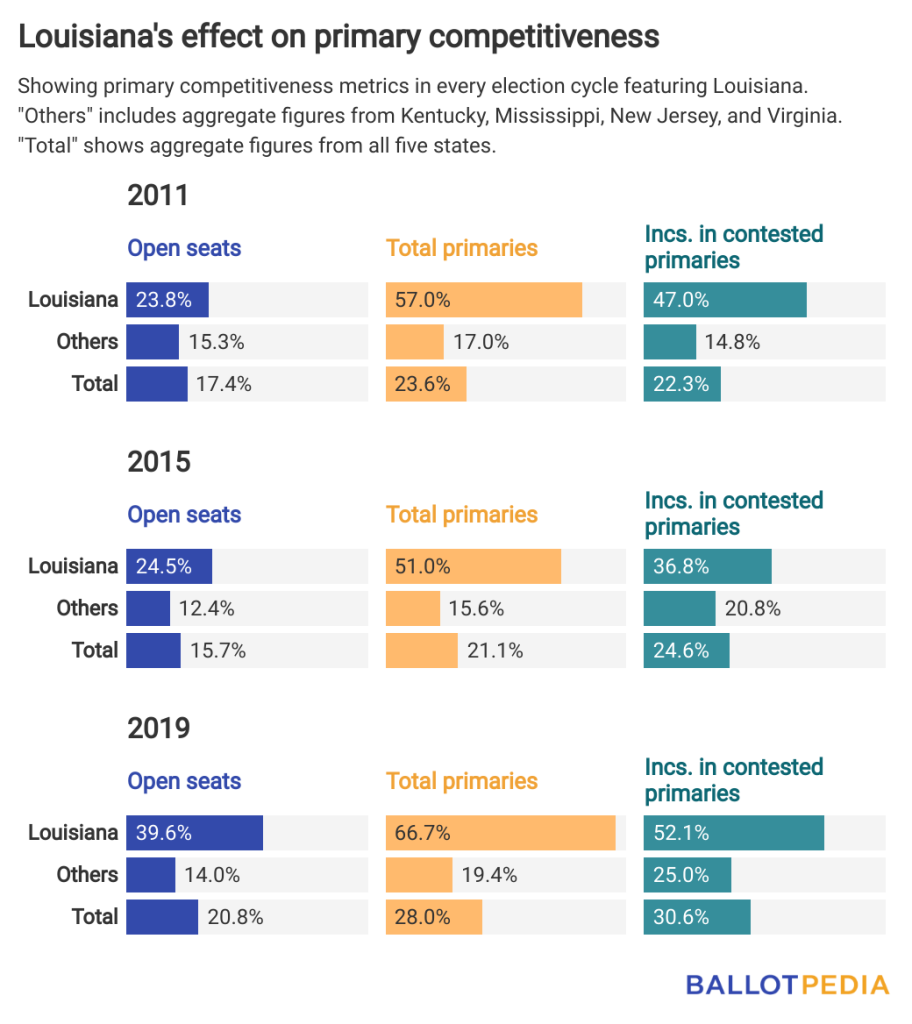The percentage of open seats in state executive and legislative elections is at a decade-high 22% compared to all odd-year election cycles since 2011.
And it’s almost definitely going to get even higher.
The 2023 rate is around one percentage point higher than the recent peak in 2019 (21%) and about six percentage points higher than the overall rate since 2011 (16%).
This data comes from Ballotpedia’s annual analysis of primary competitiveness metrics. Every year, Ballotpedia uses candidate filing deadline information to record the number and percentage of open seats, total primaries, and incumbents in contested primaries at every level of government.
While the open seat rate is currently sitting at a decade-high, the other two metrics—regarding primaries themselves—are right around average compared to overall totals since 2011, though they, too, will likely increase.

Five states are holding state executive or legislative elections this year: Louisiana and Mississippi are holding executive and legislative elections, Kentucky is holding executive elections, and New Jersey and Virginia are holding legislative elections.
The figures for 2023 will change within the next month. Louisiana’s data won’t be added until after the state’s filing deadline on August 10.
But, based on historical trends and the presence of term limits in Louisiana, it is effectively guaranteed that metrics like the open seat rate will only increase.
Between 2011 and 2019, Louisiana’s open seat rate ranged from a low of 24% in 2011 to a high of 40% in 2019. Already, there are 26 term-limited incumbents—four state executives and 22 legislators—creating a base open seat rate of 16%.
And Louisiana’s trends will also likely increase other primary competitiveness metrics.
The percentage of total primaries in the state has ranged from 51% to 67% over the past decade. This is primarily due to the state’s unique election method. Since every candidate appears on the same primary ballot, and a candidate can win the election outright in the primary with a majority vote, we treat any primary with more than one candidate as a contested primary.
That also lends itself to a much higher rate of incumbents in contested primaries compared to other states, ranging from 37% to 52%.
The chart below shows the outsized effect Louisiana tends to have on a cycle’s overall primary competitiveness metrics when it holds elections.

Use the link below to explore the data Ballotpedia has gathered so far this year, as well as historical data back to 2011. Ballotpedia updates each state’s figures throughout the year: after the filing deadline, after the primary, and after the general election.


